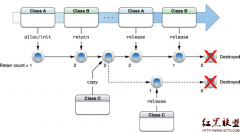UITableView一些方法
1. UITableView的初始化
[csharp]
UITableView tableview= [[UITableView alloc] initWithFrame:CGRectMake(0, 0, 320, 420)];
[tableview setDelegate:self];
[tableview setDataSource:self];
[self.view addSubview: tableview];
[tableview release];
(1)在初始化UITableView的时候必须实现UITableView的是,在.h文件中要继承UITableViewDelegate和UITableViewDataSource,并实现3个UITableView数据源方法和设置它的delegate为self,这个是在不直接继承UITableViewController实现的方法。
(2) 直接在XCODE生成项目的时候继承UITableViewController的,它会帮你自动写好UITableView必须要实现的方法。
(3) UITableView继承自UIScrollView。
2. UITableView的数据源
(1) UITableView是依赖外部资源为新表格单元填上内容的,我们称为数据源,这个数据源可以根据索引路径提供表格单元格,在UITableView中,索引路径是NSIndexPath的对象,可以选择分段或者分行,即是我们编码中的section和row。
(2) UITableView有三个必须实现的核心方法,分别如下:
-(NSInteger)numberOfSectionsInTableView:(UITableView*)tableView;
这个方法可以分段显示或者单个列表显示我们的数据。如下,左边为分段显示,右边为单个列表显示:
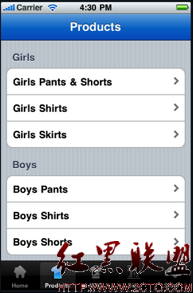
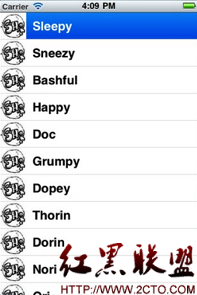
-(NSInteger)tableView:(UITableView*)tableViewnumberOfRowsInSection:(NSInteger)section;
这个方法返回每个分段的行数,不同分段返回不同的行数可以用switch来做,如果是单个列表就直接返回单个你想要的函数即可。
-(UITableViewCell*)tableView:(UITableView*)tableViewcellForRowAtIndexPath:(NSIndexPath *)indexPath;
这个方法是返回我们调用的每一个单元格。通过我们索引的路径的section和row来确定。
3. UITableView的委托方法
使用委托是为了响应用户的交互动作,比如下拉更新数据和选择某一行单元格,在UITableView中有很大这种方法供我们选择。
(1) 委托方法讲解
[csharp]
//设置Section的数量
- (NSArray *)sectionIndexTitlesForTableView:(UITableView *)tableView{
return TitleData;
}
//设置每个section显示的Title
- (NSString *)tableView:(UITableView *)tableViewtitleForHeaderInSection:(NSInteger)section{
return @"Andy-清风";
}
//指定有多少个分区(Section),默认为1
- (NSInteger)numberOfSectionsInTableView:(UITableView *)tableView {
return 2;
}
//指定每个分区中有多少行,默认为1
- (NSInteger)tableView:(UITableView *)tableViewnumberOfRowsInSection:(NSInteger)section{
}
//设置每行调用的cell
-(UITableViewCell *)tableView:(UITableView *)tableViewcellForRowAtIndexPath:(NSIndexPath *)indexPath {
static NSString *SimpleTableIdentifier = @"SimpleTableIdentifier";
UITableViewCell *cell = [tableViewdequeueReusableCellWithIdentifier:
SimpleTableIdentifier];
if (cell == nil) {
cell = [[[UITableViewCellalloc] initWithStyle:UITableViewCellStyleDefault
reuseIdentifier:SimpleTableIdentifier] autorelease];
}
cell.imageView.image=image;//未选cell时的图片
cell.imageView.highlightedImage=highlightImage;//选中cell后的图片
cell.text=@”Andy-清风”;
return cell;
}
//设置让UITableView行缩进
-(NSInteger)tableView:(UITableView *)tableViewindentationLevelForRowAtIndexPath:(NSIndexPath *)indexPath{
NSUInteger row = [indexPath row];
return row;
}
//设置cell每行间隔的高度
- (CGFloat)tableView:(UITableView *)tableViewheightForRowAtIndexPath:(NSIndexPath *)indexPath{
return 40;
}
//返回当前所选cell
NSIndexPath *ip = [NSIndexPath indexPathForRow:row inSection:section];
[TopicsTable selectRowAtIndexPath:ip animated:YESscrollPosition:UITableViewScrollPositionNone];
//设置UITableView的style
[tableView setSeparatorStyle:UITableViewCellSelectionStyleNone];
//设置选中Cell的响应事件
- (void)tableView:(UITableView *)tableView didSelectRowAtIndexPath:(NSIndexPath*)indexPath{
[tableView deselectRowAtIndexPath:indexPath animated:YES];//选中后的反显颜色即刻消失
}
//设置选中的行所执行的动作
-(NSIndexPath *)tableView:(UITableView *)tableViewwillSelectRowAtIndexPath:(NSIndexPath *)indexPath
{
NSUInteger row = [indexPath row];
return indexPath;
}
//设置划动cell是否出现del按钮,可供删除数据里进行处理
- (BOOL)tableView:(UITableView *)tableView canEditRowAtIndexPath:(NSIndexPath*)indexPath {
}
//设置删除时编辑状态
- (void)tableView:(UITableView *)tableView commitEditingStyle:(UITableViewCellEditingStyle)editingStyle
forRowAtIndexPath:(NSIndexPath *)indexPath
{
}
//右侧添加一个索引表
- (NSArray *)sectionIndexTitlesForTableView:(UITableView *)tableView{
}
(2) 其他
[csharp]
//选中cell时的颜色,在官方文档有如下可以选择
typedef enum {
UITableViewCellSelectionStyleNone,
UITableViewCellSelectionStyleBlue,
UITableViewCellSelectionStyleGray
} UITableViewCellSelectionStyle
//cell右边按钮格式
typedef enum {
UITableViewCellAccessoryNone, //don't show any accessory view
UITableViewCellAccessoryDisclosureIndicator, //regular chevron. doesn't track
UITableViewCellAccessoryDetailDisclosureButton, //blue button w/ chevron. tracks
UITableViewCellAccessoryCheckmark //checkmark. doesn't track
} UITableViewCellAccessoryType
//是否加换行线
typedef enum {
UITableViewCellSeparatorStyleNone,
UITableViewCellSeparatorStyleSingleLine
} UITableViewCellSeparatorStyle
//改变换行线颜色
tableView.separatorColor= [UIColor blueColor];
4. UITableViewCell
表中的每一行都代表一个UITableViewCell。可以使用图像、文本还有辅助的图标等来自定义你自己的UITableViewCell。你可以自定义你自己的cell如下模型或者像appstore那样的。
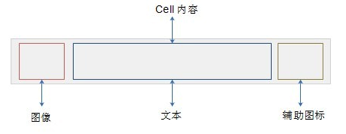
UITableViewCell为每个Cell提供了三个可以选择的属性,如下:
l textLabel:填写文本
l detailTextLable:稍微详细的副标题
l imageView:用来显示你cell的图片,可以通过UIImage来加载。
最后给出一个官方的demo给大家学习下,多实践,不懂的就问下,下节课讲些UITableView应用中实际会出现的问题,比如自定义啊,重用单元格,单元格的数据排序等问题。欢迎大家拍砖。
附上代码:http://www.2cto.com/uploadfile/2012/0515/20120515111339861.zip
作者 潘志威
相关新闻>>
- 发表评论
-
- 最新评论 进入详细评论页>>

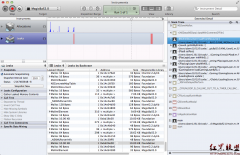

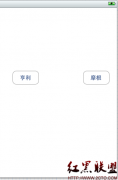
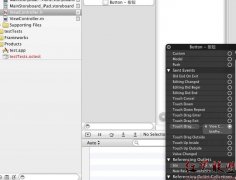


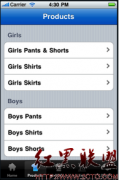
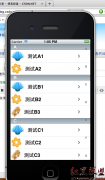
![[iPhone中级]iPhone团购信息客户端的开发 (二)](/uploads/allimg/131022/200H11235-0-lp.png)
